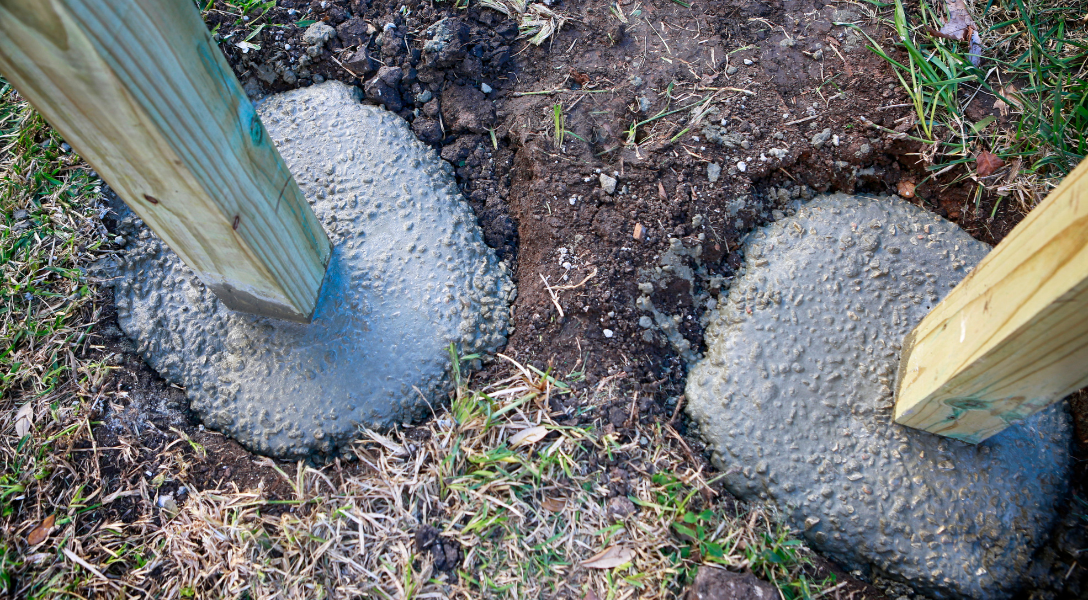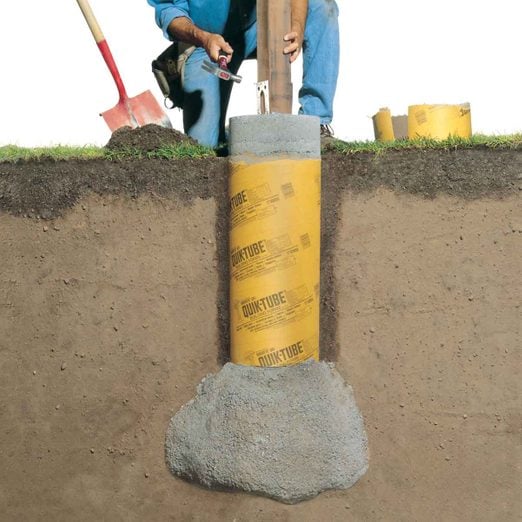Step-by-Step Deck Excellence: Ensuring Stability with Properly Installed Deck Footings
Step-by-Step Deck Excellence: Ensuring Stability with Properly Installed Deck Footings
Blog Article
Choosing the Right Deck Footings for Stability and Resilience
The longevity and security of your deck depend greatly on the type of footings you choose, as they provide the necessary support and stability to withstand the examination of time. In this conversation, we will check out the numerous kinds of deck footings, take into consideration the essential aspects to consider when making a decision, and delve right into the pros and disadvantages of different alternatives.
Sorts Of Deck Footings
There are numerous kinds of deck grounds that can be used, each offering unique advantages and considerations. One common kind of footing is the concrete pier footing. These grounds contain a round hole full of concrete, which provides a strong foundation for the deck articles. Concrete pier footings are reasonably very easy to install and supply excellent security, making them a popular selection for many deck projects.
These footings are set up by screwing them into the ground, which develops a safe structure for the deck. They also enable for very easy adjustment and progressing of the deck if required.
Alternatively, some contractors decide for precast concrete footings. These footings are constructed from sturdy concrete and come in various shapes and dimensions to accommodate different deck styles. Precast concrete footings are practical to install and offer a steady base for the deck structure.
Finally, one more option is the post-in-anchor footing system. This sort of footing involves driving a metal support right into the ground and connecting it to the deck article. It provides adaptability in regards to positioning the deck blog posts and appropriates for decks with light-weight structures.
When selecting the appropriate sort of deck ground, it is necessary to take into consideration aspects such as soil conditions, deck load, and neighborhood building codes (Deck Footings). Consulting with a professional contractor or architectural engineer can assist make certain the proper footing is picked for a secure and secure deck
Factors to Think About When Picking Grounds
When picking the appropriate grounds for a deck, it is important to very carefully take into consideration various factors such as soil problems, deck tons, and adherence to regional building codes. These elements play a substantial role in making sure the security and toughness of the deck structure.
One of the key factors to consider is the dirt conditions. The sort of soil on which the deck will be constructed identifies the type of footings called for. Decks built on loose or sandy soils might need deeper footings to give adequate assistance and prevent settling. On the other hand, decks developed on clay or extensive soils may need footings that can suit the soil's propensity to increase and agreement.
Another important factor is the deck lots. The weight of the deck, including the products utilized and any type of potential real-time tons such as furnishings or celebrations, need to be taken into account when selecting grounds. The footings must be developed to birth the weight of the deck and disperse it evenly to avoid any kind of structural problems or failings.
Last but not least, adherence to neighborhood building regulations is paramount. Building ordinance differ from region to area, and it is important to adhere to the certain needs set by the regional authorities. Deck Footings. These codes guarantee that the deck is developed securely and fulfills the needed standards for architectural integrity and load-bearing capability
Concrete Footings: Pros and Disadvantages

When utilized as the foundation for a deck,Concrete footings supply several advantages and downsides. On the silver lining, concrete grounds provide excellent stability and longevity. Concrete is a stiff and solid product that can sustain heavy loads and stand up to different climate conditions. It also has a long life expectancy, making it a reliable choice for lasting usage.
One more advantage of concrete footings is their flexibility. They can be poured into different shapes and sizes to fit different deck styles and configurations. Concrete footings can be customized to fit the certain demands and demands of the deck structure.
However, there are also why not try this out some drawbacks to utilizing concrete footings. One major disadvantage is the cost and labor associated with their installment. Concrete grounds require excavation and typically need the assistance of hefty equipment. This can enhance the general expense of the deck project and might need expert assistance.

Helical Piers Vs. Sonotubes: Which Is Better?
In thinking about the structure choices for a deck, the contrast between helical piers and sonotubes is critical in determining the superior choice. Helical piers, also known as screw piles, are steel shafts with helical plates affixed to them. They are turned right into the ground making use of hydraulic equipment, giving a secure and sturdy structure for the deck. On the other hand, sonotubes are cylindrical forms made of cardboard or fiber material that are full of concrete. They are put in a hole went into the ground and offer support for the deck.
When it involves security and resilience, helical piers have the top hand. The helical plates on the piers develop a strong grip with the soil, preventing any kind of motion or shifting of the deck. This is particularly advantageous in locations with unsteady or shifting dirt problems. Sonotubes, on the various other hand, depend solely on the concrete loading for security, which may not offer the exact same degree of toughness and resistance.
In terms of setup, helical piers are reasonably less complicated and faster to mount compared to sonotubes. The hydraulic machinery made use of to twist the piers his explanation into the ground makes certain a efficient and fast procedure. Sonotubes, on the other hand, need excavating openings and pouring concrete, which can be labor-intensive and time-consuming.
Furthermore, helical piers are an even more versatile option. If required, they can be made use of in various soil problems and can be readjusted or reinforced. Sonotubes, on the other hand, may call for additional support, such as rebar, in specific dirt problems or locations with high lots requirements.
Selecting the Right Footings for Your Deck's Measurements
For ideal architectural integrity, it is necessary to very carefully pick the appropriate footings that align with the dimensions of your deck. The dimensions of your deck, including its width, length, and height, play a substantial role in determining the type and size of footings required.
When picking footings for your deck, it is necessary to take into consideration the load-bearing ability of the dirt. The weight of the deck, incorporated with the weight of any kind of furniture or individuals on it, puts in a considerable force on the footings (Deck Footings). It is essential to choose footings that can properly support this weight without changing or sinking over time.
The dimension and shape of the grounds should also be taken into consideration. Bigger decks with higher dimensions call for larger footings to offer sufficient security and support. The form of the grounds, whether they are square or rounded, relies on the design and format of the deck. Furthermore, the deepness at which the footings are installed should be determined based upon the frost line in your region to prevent any kind of heaving or moving because of freezing temperatures.
Conclusion
In final thought, choosing the appropriate deck footings is critical for making certain stability and resilience. Variables such as the sort of grounds, the deck's dimensions, and the advantages and disadvantages of various choices should be thought about. Concrete grounds provide toughness and longevity, however may be a lot more time-consuming and costly to mount. Helical piers and sonotubes have their own benefits and negative aspects. Eventually, picking the appropriate footings for your deck's certain requirements is necessary for a durable and successful structure.
These footings consist of a cylindrical hole filled up with concrete, which supplies a strong structure for the deck articles. Concrete pier grounds are relatively easy to install browse around these guys and offer outstanding stability, making them a prominent option for several deck tasks.
Precast concrete grounds are hassle-free to mount and give a secure base for the deck structure.
It provides versatility in terms of positioning the deck messages and is suitable for decks with lightweight structures.
Concrete grounds offer several benefits and disadvantages when made use of as the structure for a deck.
Report this page